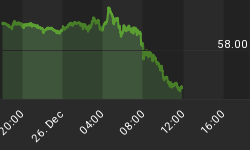A Russian warship rumored to be carrying $130 billion in gold treasure sunk over a century ago. Now, it’s been found, near an island off South Korea, but the gold remains a mystery.
The lucky treasure hunters are the newly established South Korean Shinil Group, but it won’t be until this fall that they bring the ship up from its depths and let everyone in on the gold mystery.
They’ve also promised to give half the gold—believed to be contained in 5,500 boxes--to Russia if it’s still there—or ever was.
Sunk 113 years ago in the Russia-Japanese War during the 1905 Battle of Tsushima in waters that lie between present-day South Korea and Japan, the 5,800-ton “Dimitrii Donskoi”, without gold, could be worth only about 1 million yon (around $884,000), according to Shinil.
Shinil found it near the island of Ulleundgo, South Korea, using manned submersibles at a depth of over 430 meters. It was damaged by war and ravaged by time. The ship was discovered on July 14 and its identity was confirmed the following day.
“The body of the ship was severely damaged by shelling, with its stern almost broken, and yet the ship’s deck and sides are well preserved,” the company said in a statement on its website.
While there’s no word on the gold yet, there are plenty of skeptics on board this historical voyage. The first-class armored cruiser shouldn’t have been carrying gold in the first place, say some.
“Keeping all your money on one shop would be too dangerous,” Kirill Kolesnichenko, professor of social sciences at Russia’s Far Eastern Federal University, told Russia’s Argumenti i Fakti, asking “Why would Russia send gold by ship when it could move it by train to Vladivostok without any risk?”
That’s hardly enough to stem the frenzied interest in the discovery, though. When treasure is in question, common sense tends to sink with the ship. Related: The Case For Gold Is Not About Price
The investor frenzy has been so hard and fast that the South Korea regulatory authorities have found it necessary to issue a warning about potential investment losses.
"Investors should beware because it's uncertain whether the ship is salvageable and whether Shinil would be able to gain ownership of the assets even if it gets permission to raise it," the Associated Press cited an unnamed official as saying, reminding investors that this isn’t the first time someone has claimed to find the missing treasure.
Indeed, there are some warning signs here. Shinil was only created on June 1, 2018, according to AP, and with a meager $88,000. And it’s already announced that it would acquire shares in South Korea’s Jeil Steel. That was right before Shinil announced the discovery of the Russian ship, and Jeil Steel’s stocks shot up 30 percent on South Korea’s KOSDAQ on the day of the announcement. Two days later, it lost 20 percent on its share price.
This is what South Korea financial regulators are concerned about. They’ve been down this road before.
In 2003, a remnant of the Dong Ah Construction Industrial company—whose construction business went bankrupt in 2001—claimed to have discovered the Dmitri Donskoi. Dong Ah’s problem, though, was that even if it had discovered the Russian ship, it didn’t have the money or the resources to pull it up.
According to South Korea financial authorities, "Dong-Ah Construction made similar claims over the same ship but failed to deliver on its promises and went bankrupt, causing huge losses for investors."
Representatives of the former company told South Korea media this week that they should be credited with the discovery, and Shinil “just recorded the ship with more advanced equipment … after they went to the location we found”.
Three questions remain: First, is there really any gold on board? Second, can Shinil actually bring it to the surface, which would require approval from the Minister of Oceans and Fisheries and a 10-percent deposit of the assumed value of what’s found. And, three, is Shinil for real?
Shinil reportedly says it plans to try to raise the ship in October or November, and to invest 10 percent of anything found in the island, a popular tourist destination for Koreans. It has also promised a museum, and—even more far-fetched—some development projects, including a possible rail line through North Korea, linking South Korea to Russia.
By Damir Kaletovic for Safehaven.com
More Top Reads From Safehaven.com:

















